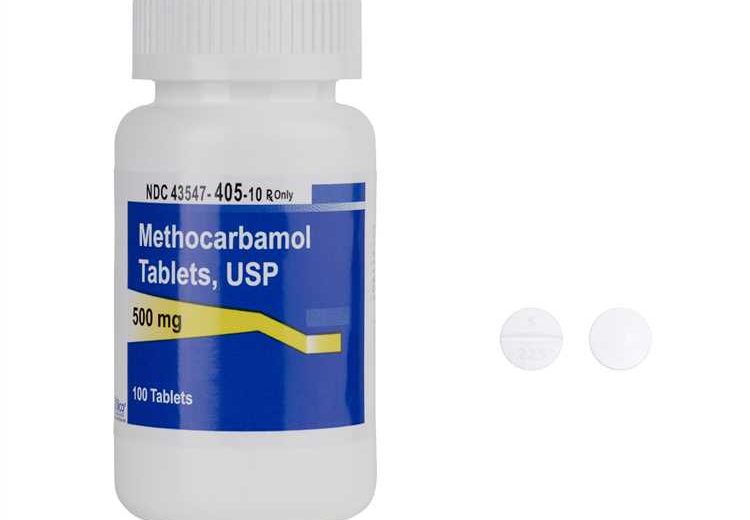
Methocarbamol, commonly known by its brand name Robaxin, is a popular muscle relaxant prescribed to relieve discomfort associated with acute skeletal muscle conditions. This medication is particularly effective for individuals experiencing muscle spasms and pain, significantly improving their quality of life. This article explores its therapeutic benefits, clinical applications, potential side effects, and important safety considerations.
Therapeutic Benefits of Methocarbamol
Robaxin is renowned for its ability to provide substantial muscular relief. By targeting the central nervous system, it effectively reduces muscle stiffness and spasms. This is especially beneficial for individuals recovering from injuries or dealing with chronic muscle issues. By alleviating muscle tension, Methocarbamol enhances mobility and diminishes pain, positively affecting daily activities and overall well-being.
Clinical Applications of Methocarbamol
Healthcare professionals often incorporate Robaxin into treatment plans for patients with musculoskeletal discomfort. It is typically used alongside other therapeutic measures, such as physical therapy and rest. The medication’s ability to complement various treatment modalities makes it a versatile option for managing muscle pain and facilitating rehabilitation efforts.
Potential Side Effects of Methocarbamol
While generally well-tolerated, awareness of potential side effects associated with Robaxin is crucial. These may range from mild symptoms, such as drowsiness and dizziness, to more severe reactions requiring medical attention. Understanding these risks allows both patients and healthcare providers to ensure safe and effective use of the medication.
The Role of Methocarbamol in Muscle Relaxation
What is Methocarbamol?
Methocarbamol is a pharmaceutical agent that alleviates discomfort and promotes recovery by targeting specific physiological pathways. It is particularly effective in managing conditions related to muscle spasms and discomfort. The drug is widely used in clinical settings due to its efficacy and safety profile, restoring normal function and improving the quality of life for many individuals.
Mechanism of Action: How Methocarbamol Works
To understand how Methocarbamol operates in the body, it’s essential to examine its biochemical interactions and physiological processes. The primary action of this muscle relaxant occurs within the central nervous system, where it reduces muscle hyperactivity and alleviates discomfort linked to muscle spasms. Rather than acting directly on the muscles, it modulates signals in the brain and spinal cord that trigger muscle contractions.
Common Medical Uses of Methocarbamol
This section highlights the various medical scenarios where Methocarbamol is effective, detailing the specific conditions it can manage. It is commonly prescribed for:
| Condition | Description |
|---|---|
| Acute Muscle Pain | Alleviates severe muscle pain caused by injuries or overuse. |
| Spasticity | Helps relax muscles experiencing continuous contraction. |
| Chronic Conditions | Provides relief for ongoing musculoskeletal conditions, such as chronic back pain. |
| Post-surgical Recovery | Aids in recovery by alleviating muscle spasms and discomfort after surgery. |
Advantages of Using Methocarbamol
The incorporation of Methocarbamol into therapeutic regimens offers a range of advantages:
- Enhanced Muscular Relaxation: Promotes relaxation and relief from tension.
- Improved Mobility: Reduces muscle spasms, facilitating better movement.
- Discomfort Alleviation: Leads to a noticeable reduction in pain and distress.
- Effective Treatment Adjunct: Complements other treatment methods for comprehensive care.
- Minimal Sedative Effects: Causes less drowsiness compared to alternative muscle relaxants.
- Versatile Administration Routes: Available in various forms, including oral and intravenous.
- Reliable Safety Profile: With proper dosage adherence, adverse reactions are minimal.
Potential Adverse Reactions to Consider
It’s crucial to recognize the potential adverse reactions associated with Methocarbamol. These may include:
| Adverse Reaction | Description |
|---|---|
| Gastrointestinal Upset | Nausea, vomiting, or diarrhea may occur. |
| Drowsiness | Some individuals may feel lethargic or drowsy. |
| Allergic Reactions | Mild skin irritation to severe anaphylaxis may occur in some users. |
| Dizziness | Lightheadedness or vertigo can pose risks during activities requiring alertness. |
| Respiratory Depression | Rarely, high doses may lead to respiratory issues requiring immediate attention. |
Who Should Avoid Methocarbamol?
Certain individuals should exercise caution or avoid Methocarbamol altogether:
- Medical Conditions: Those with renal impairment or liver dysfunction, as well as individuals with allergies or sensitivity to muscle relaxants, should refrain from using it.
- Medication Interactions: Methocarbamol may interact with sedatives or central nervous system depressants. Patients taking tranquilizers or other muscle relaxants should consult their healthcare provider before starting Methocarbamol.
Exploring the Intricacies of Methocarbamol
Understanding Methocarbamol: A Primer
To fully appreciate Methocarbamol, it’s important to grasp its chemical composition and pharmacological profile. This foundational knowledge paves the way for understanding its therapeutic applications.
Diverse Therapeutic Applications
Methocarbamol’s versatility extends beyond conventional uses. It addresses various musculoskeletal discomforts and may even have off-label applications, demonstrating its broad clinical utility.
The Pharmacological Mechanisms of Methocarbamol
Methocarbamol’s therapeutic effects stem from its interactions within the neuromuscular system. Instead of directly targeting muscles, it modulates neurotransmitter activity in the central nervous system, orchestrating a series of responses that result in muscle relaxation.
| Neurotransmitter | Effect |
|---|---|
| GABA (Gamma-Aminobutyric Acid) | Enhances inhibitory neurotransmission, reducing muscle spasms. |
| Glutamate | Antagonizes excitatory neurotransmission, suppressing abnormal contractions. |
Methocarbamol’s Role in Muscle Pain Management
Methocarbamol serves as a cornerstone in managing muscular conditions, providing significant relief and aiding recovery. With its diverse applications and safety profile, it remains a valuable asset in therapeutic practice. However, understanding its potential side effects and contraindications is crucial for safe and effective use.
